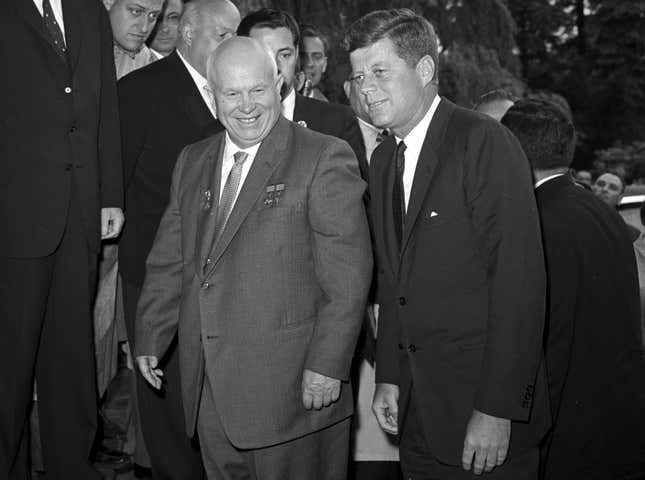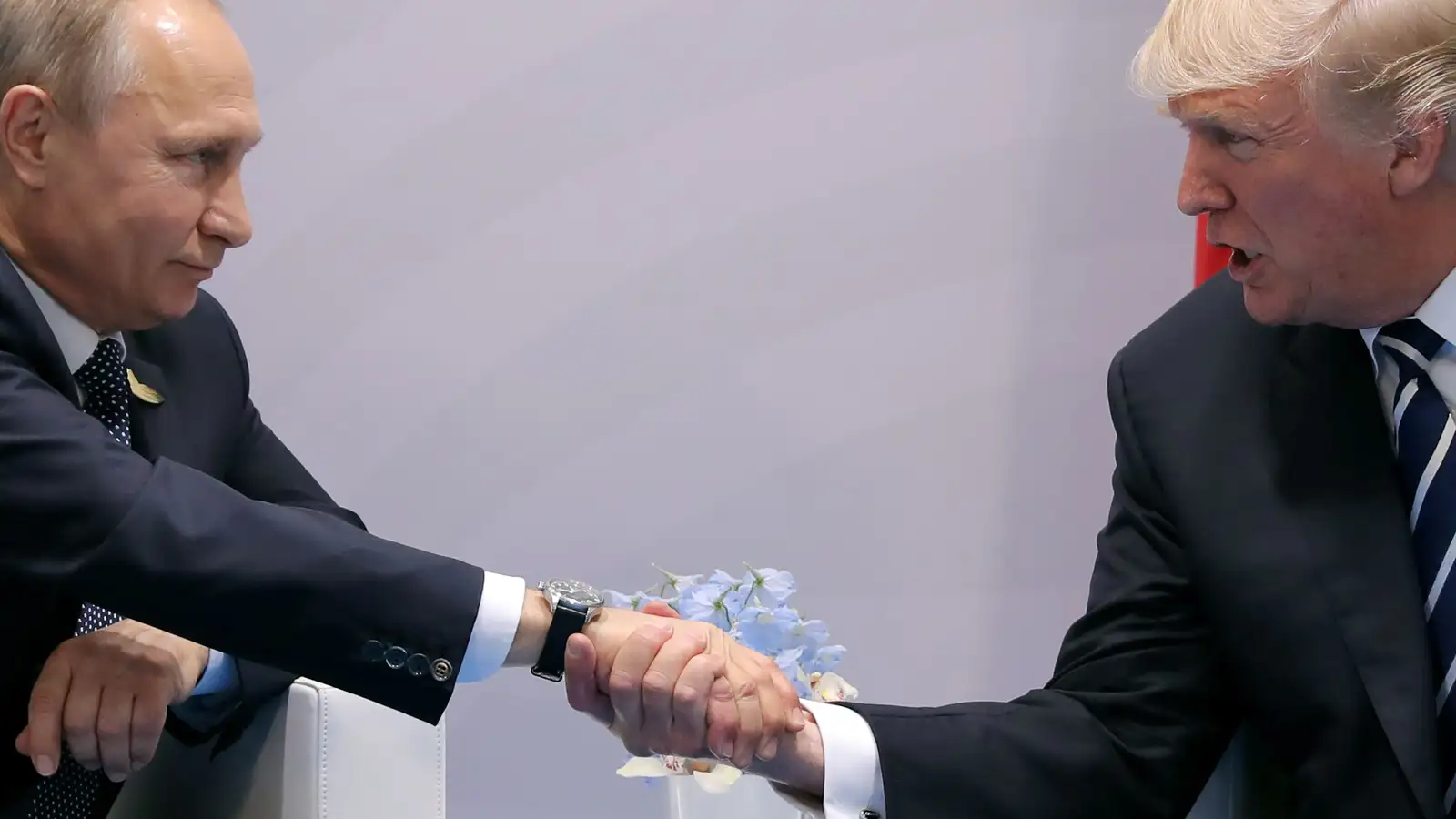Finally, it’s happened: After being associated in news stories, commentary and speculation for months, Donald Trump and Vladimir Putin, who had only spoken telephonically, finally met in Hamburg, Germany at the G20.
History shows that first impressions matter when it comes to Washington-meets-Moscow first encounters.
From the looks of it, both men played the roles that have made them famous. Trump, the eager back-slapper seeking to establish a bit of dominance with a two-handed, capitalistic approach to the initial handshake. Putin, the steely-eyed and more purposeful presence staking a quieter claim to the upper hand.
This first meeting was shared on Facebook on the official account of the Bundesregierung, the German parliament, in a video showing handshakes and meetings amongst G20 attendees. “Exklusive Perspektive!” announces the post introducing the video. And exclusive it is indeed: Lots of hugging and cordial handshakes between the heads of states, including (at 0:31) the American and Russian presidents.
In the video, as well as later, in the pictures of their sit-down meeting, the two look rather relaxed, with Trump deploying a moderate version of his famed handshake, and Putin maintaining a steady composure—true to the manly image of statesman adventurer that he cultivates.
Trump appears to be the more friendly—similarly to his meeting with Sergei Lavrov, in which Trump had been laughing away just a day after firing FBI director James Comey, he looks rather pleased with the Russian leader’s company. Putin looks more reserved, though one can see the hint of a timid smile.
“An honor to be with you,” Trump said to Putin, before their private meeting began, according to the press present at the event.
“Delighted to meet you,” Putin replied.
Trump ignored reporters’ questions of whether he’d raise the issue of Russian meddling in the 2016 US presidential election. Instead, as the press was leaving the room, Trump “leaned in and said something to Putin, who chuckled,” according to the pool report.
Their meeting, scheduled to last 30 minutes, went on for more than two hours.
The US-Russia relationship may be, as Kremlin spokesman Dmitry Petrov put it at the “lowest possible point”—and worse even than after World War II—yet the meeting seemed remarkably cordial. (Certainly more friendly than the last meeting between Putin and Barack Obama, for instance.)
Still, there’s no comparison to the Cold War-era tensions that were fueled by the threat of global nuclear war between the US and the Soviet Union. In June 1961, when John F. Kennedy and Nikita Khrushchev met for the first time in Vienna, things were tough, and were about to get tougher.

In two days of intense meetings only weeks after the US-backed invasion of Cuba failed at the Bay of Pigs, the Soviet leader overwhelmed Kennedy, criticizing America’s foreign policy, its support of despotic regimes, and saying that the US stood against the freedom of people around the world.
After the encounter Kennedy candidly admitted to New York Times columnist James Reston that the meeting was the worst thing that had ever happened to him. “He savaged me,” Kennedy said. Months later, the Berlin Wall was erected, ushering in a tumultuous era of East-West confrontation that would last for decades. The Cuban missile crisis of October 1962 was among the incidents in which nuclear annihilation was narrowly averted.
